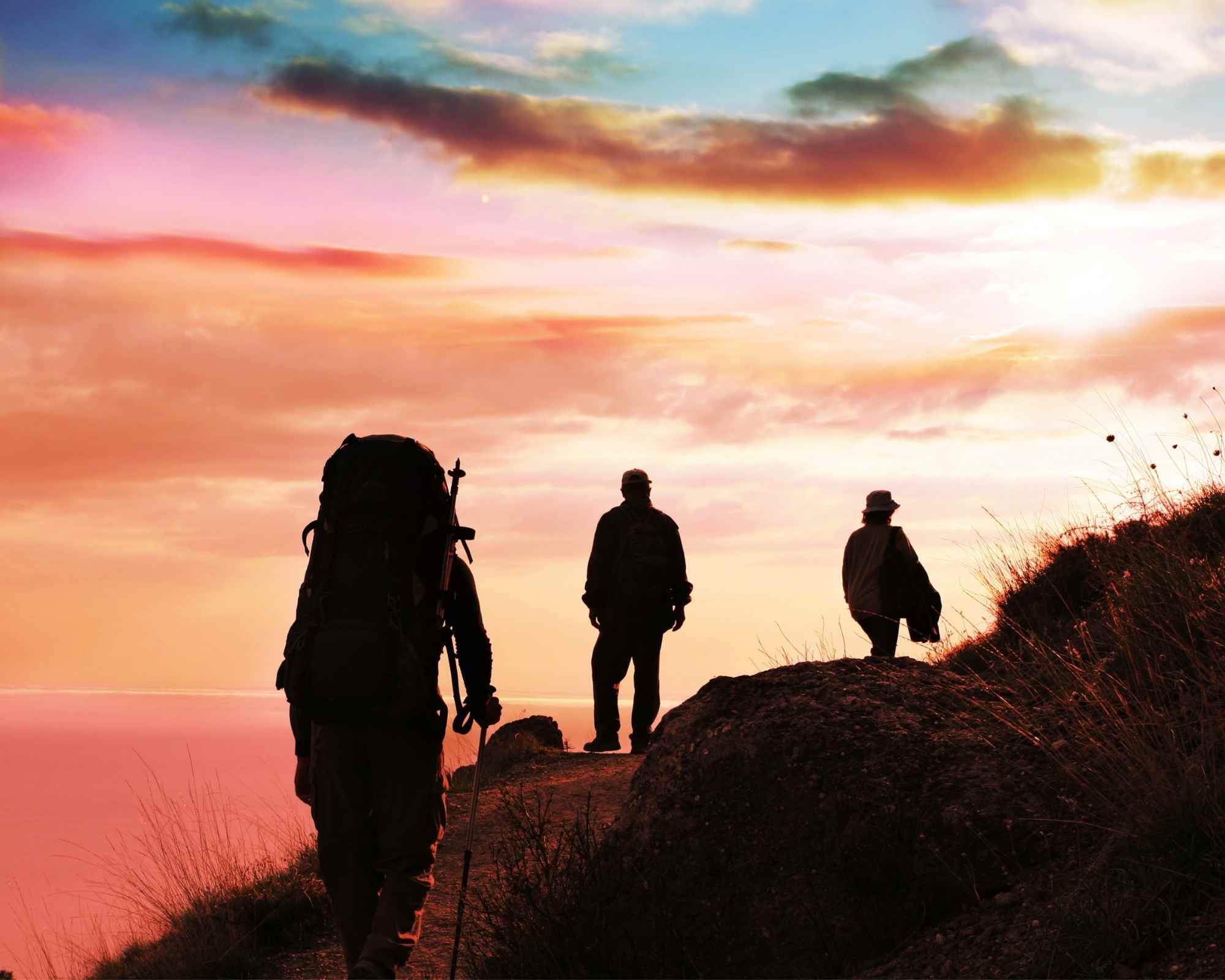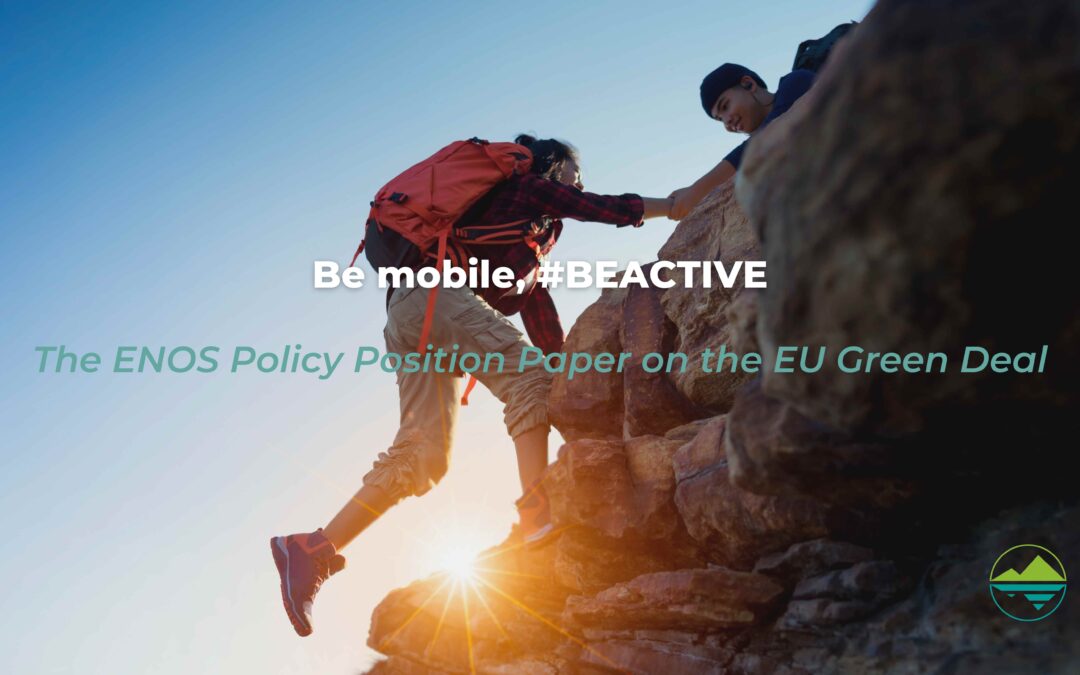The ENOS Policy Position Paper on the EU Green Deal is a fairly long and detailed document that highlights our views on the green deal but also how the outdoor sports sector can respond to support its implementation. Our response involved the creation of 10 distinct sections or chapters and over the coming weeks our sustainability group will provide some key information on each of these topics:
- Reconnecting people with nature to help increase, enhance and protect biodiversity
- Being green, eating green and supporting sustainable agriculture
- Clean energy for clean and green sports
- Sustainable industries, resources and equipment for outdoor sports
- Greening our outdoor infrastructure
- Be mobile, #BEACTIVE
- Zero pollution in our natural environment
- Climate action
- Research and innovation
- Investing in a green future
Be mobile, #BEACTIVE
Mobility within a free Europe has empowered many Europeans and fostered understanding and cultural exchange between the countries of the EU. Personal experience, personal encounters and common activities are still – regardless of the developing digital and virtual communication options – vital to create a European identity and inherent dependent on mobility. European identity is a canon of common values and a common understanding of what shapes a good life. For the majority of Europeans recreation and sport are a meaningful element of such a good life, accessible for most and more globalized than ever before.
But these achievements create social and ecological stresses. Motorized individual and mass transport are still dominated by fossil fuels, thus contributing substantially to global warming. Climate change sets clear and non-negotiable limits to green house gas emissions, if the world should stay within a safe corridor of global warming. Europeans have a fair share of responsibility for reducing greenhouse gas emissions. Meeting mitigation goals would require transformative changes in the transport sector[1].
Transforming mobility is an enormous challenge for recreation and sport as these activities cause a major share of the passenger kilometres in the European Union[2]. Sport mobility is dominated by individual car transport[3]. This is even more true for outdoor sport. Outdoor sport is motor sport, this is the hands-down reality in Europe today[4]. As outdoor sport often involves traveling to distant destinations, air transport is another unsustainable consumption pattern. Tourism in general accounts for about 8% of global greenhouse gas emissions[5], the share of outdoor sport is unknown. Limit global warming requires immediate action[6], involving rapid and deep and in most cases immediate GHG emissions also for the outdoor sport.

Mitigation strategies for the outdoor sport
Both short- and long-term transport mitigation strategies are essential if the ambitious and GHG reduction targets of the European Green Deal and the Paris Declaration are to be achieved. Whereas short-term strategies are individual responsibility and active decisions for behavioural changes, most mid and all long-term strategies are subject of a range of strong and mutually-supportive policies. This paper focusses on individual action only.
Short-term strategies:
- Avoid journeys. Use local or regional landscape for practising outdoor sport. Adapt your sport to local conditions.
- Reduce the number of journeys. Do fewer trips and stay longer.
- Think before you travel. The grass isn’t always greener on the other site of the river.
- Use car sharing for your outdoor trips. Create groups in social media to organize the car sharing. Start an initiative for car sharing in your local club or with your friends and buddies.
- Rent a bus or minivan for your next club journey instead of individual travel. Maybe buy an electric van as a club. Look for sponsorship greening your club.
- Shift to lower carbon transport systems. Use the bus or train where possible and accept longer travel time. Walk or use the bicycle for shorter distances. Think about an E-Bike for longer distances.
- Avoid using air transport wherever a realistic alternative is available.
- Offset at least a good share of your GSG emissions. Do it individual or start an initiative in your club.
- Inspire others by giving a good example
Mid-term strategies:
- Shift to a less energy intense vehicle when you buy new, ideally shift to electric or hydrogen power vehicles.
- Engage in your local community to create or improve outdoor sport opportunities
- Engage in your local club or federation to promote behavioural change and show options for action.
- Vote for parties strengthening public transport.
- Engage in the sport federations lobbying for public transport meeting the demands of outdoor sport enthusiasts. E.g. trains with the options of bike or boat transport.
- Support environmental NGOs in their fight against climate change.
- Develop your own ideas and promote them.
Long-term strategies:
- Study biology, technology, engineering, physics or mathematics to be part of the necessary research and development for a sustainable future.
- Learn a craft to realize the sustainable technology on the ground.
[1] See IPCC AR6 WG III
[2] For example, in Germany 2019 40,7 % of all passenger kilometres are referred to vacation and recreation according the UBA.
In Switzerland mobility in the sport sector accounted for 6% of the greenhouse gas emissions of the transport sector in 2010. Kägi et al (2010): Klimaänderung und Sport. Der Sektor Sport als Betroffener und Verursacher der Klimaänderung – mögliche Anpassungs- und Vermeidungsstrategien.
[3] For the German state Baden Württemberg, a study of the Institut für Verkehr und Umwelt in 2005 calculated 6,6 billiard kilometres by car directly connected to sport in a year. Institut für Verkehr und Umwelt der Landesverkehrswacht Baden-Württemberg (IVU) (2005): Mobilität und Sport. Eine Studie für das Land
Baden-Württemberg im Auftrag des Ministeriums für Umwelt und Verkehr. Stuttgart
[4] See Stettler J. (2000): Trend- und Natursportarten und Mobilität. Trend- und Natursportarten in den Wissenschaften. Forschungsstand – Methoden – Perspektiven. Symposium am Geographischen Institut der Johannes Gutenberg-Universitaet Mainz am 31.3. – 1.4.2000. Mobility survey of the German Alpine Club DAV 2015
[5] Lenzen, M., Sun, YY., Faturay, F. et al. The carbon footprint of global tourism. Nature Clim Change 8, 522–528 (2018).
[6] IPCC AR6 WG III

